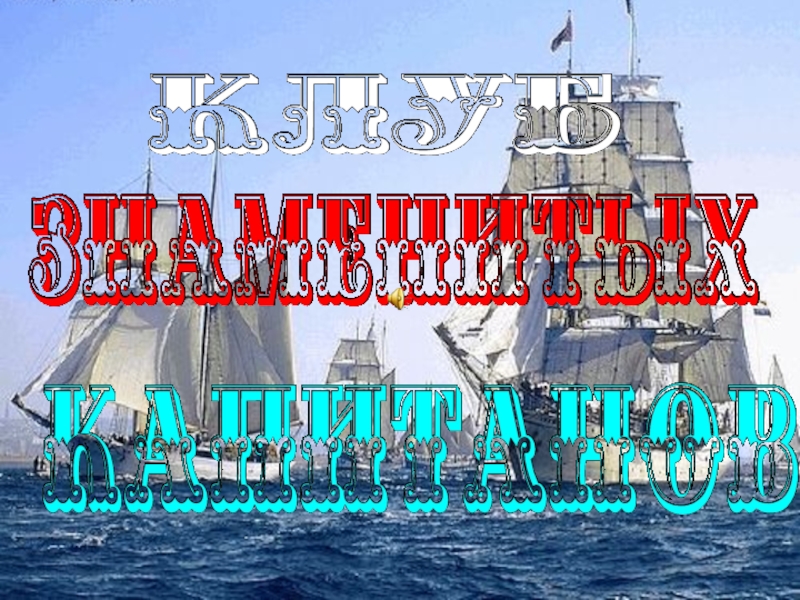- Главная
- Разное
- Образование
- Спорт
- Естествознание
- Природоведение
- Религиоведение
- Французский язык
- Черчение
- Английский язык
- Астрономия
- Алгебра
- Биология
- География
- Геометрия
- Детские презентации
- Информатика
- История
- Литература
- Математика
- Музыка
- МХК
- Немецкий язык
- ОБЖ
- Обществознание
- Окружающий мир
- Педагогика
- Русский язык
- Технология
- Физика
- Философия
- Химия
- Шаблоны, фоны, картинки для презентаций
- Экология
- Экономика
Презентация, доклад по английскому языку на тему Ancient Russian Towns
Содержание
- 1. Презентация по английскому языку на тему Ancient Russian Towns
- 2. IvangorodA town in Leningrad oblast 159 km
- 3. The fortress was established in 1492Its purpose
- 4. During the Russo-Swedish War, 1496-1499, the entire
- 5. Ivangorod was considered an administrative part of
- 6. In 1738 the fortress was designated not adequate for defence purpose.
- 7. During World War I, the fortress was
- 8. During the World War II the fortress
- 9. Tne plan of the fortress 1. Alarm
- 10. VyborgVyborg is a town in Leningrad Oblast
- 11. The Vyborg CastleThe castle was founded during
- 12. The castle stands in the middle of
- 13. Of the fortress wall, built by the
- 14. Vyborg preserved one of the few examples
- 15. Nyenschantz Nyenschantz was a Swedish fortress built
- 16. In 1656 a Russian attack badly
- 17. On June 15, 2000 a monument was
- 18. The Korela Fortress (Priozersk)Korela Fortres is the
- 19. From the Middle Ages, Priozersk was known
- 20. Russia definitively captured the area during the
- 21. The Grand Duchy of Finland was formed
- 22. In the Winter War Finland was forced
- 23. Round gate tower with observation post (Pugachev`s
- 24. In 1948, Käkisalmi was renamed to Priozersk
- 25. KoporyeKoporye is a historic village in Leningrad
- 26. Koporye was mentioned in the Novgorod annals
- 27. The Novgorodians had to restore the stone
- 28. After Novgorod's incorporation into Muscovy, the fortress
- 29. When the border of Russian Empire was
- 30. One can get inside the fortress through
- 31. Staraya (Old) LadogaStaraya Ladoga is a village,
- 32. The heart of Staraya Ladoga is an
- 33. The ancient capital used to be a
- 34. Scientists suggests that Ladoga was founded in
- 35. Different Names of the TownFinnish – Alode-Joki (I.e. “lowland river”)Norse – AldeigjaOld East Slavic - Ladoga
- 36. In 862 the legendary Varangian leader Rurik
- 37. In the 12th and 13th centuries, Ladoga
- 38. 1702 г. — Peter the Great choose
- 39. 1984 г. —an architectural and archeological conservation
- 40. ShlisselburgShlisselburg is a town in Leningrad Oblast,
- 41. In august 1348 the Swedes came up
- 42. Oreshek for many times went from one
- 43. When the northern War started, Russian troops
- 44. In the XVIII century the fortress lost
- 45. As every fortress, Oreshek has its own
- 46. The second legend is connected with princess
- 47. On September,8 1941 the Germans conquered Schlisselburg.
- 48. All these days the fortress was under
- 49. Today the fortress is the branch of
Слайд 2Ivangorod
A town in Leningrad oblast 159 km west of St.-Petersburg
Situated on
It is located just opposite to the Estonian town of Narva
Слайд 3
The fortress was established in 1492
Its purpose was to fend off
It was named after Ivan III of Moscow
In different periods was controlled by the Russian, the Swedes, by the Estonians and the Nazi Germany
Слайд 4During the Russo-Swedish War, 1496-1499, the entire population inside the fortress
But a year later the fortress was won back by Muscovite forces.
For almost 10 years, the land around the castle was in constant warfare.
Слайд 5Ivangorod was considered an administrative part of the town of Narva
In 1704, Peter the Great captured the castle from the Swedes
After the early 18th century, the military role of the fortress decreased
Слайд 7During World War I, the fortress was captured by Germans on
Слайд 8During the World War II the fortress was first controlled by
The Germans established two POW camps within the fortress.
When Soviet armies reached the fortress in 1944, the retreating Germans did a great deal of damage to its buildings.
Currently, the fortress serves as a museum.
Слайд 9Tne plan of the fortress
1. Alarm bell tower;
2. Upper
3. Otvodnaya tower;
4. New (water) tower;
5. Cache (hiding-place);
6. Wide tower;
7. Provisions tower;
8. Gate tower;
9. Ivangorod gates;
10. Governor-general`s tower;
11. Long-necked tower;
12. Fortification elements;
13. Well tower;
14. Gunpowder tower;
15. The Virgin`s Assumption church;
16. St.Nicholas church;
17. Warehouse XVII c.;
18. Armoury
Слайд 10Vyborg
Vyborg is a town in Leningrad Oblast situated in 130 km
It was founded in 1293 by marshal Torkel Knutsson
At first the town was located inside the outer fortifications of the Vyborg castle
The area where it is located used to be a trading center on the River Vuoksa
The town was under Russian, Finnish and Swedish authority
Слайд 11The Vyborg Castle
The castle was founded during so-called “Third Swedish Crusade”
It
1323-1710 – Vyborg remained in Swedish hands
19th cent. – administrative and trade center for the eastern part of Finland, one of the three Finnish major castles
The Finnish name of the town is Viipuri
Over the centuries the castle was reconstructed several times
Слайд 12
The castle stands in the middle of a straight on a
The tower with the dome is 48.6 meters tall, the maximal width of the walls is 5 meters, and there is a panoramic point on the top of the tower, where one enjoys a wonderful view of Vyborg. Currently the castle hosts a museum.
Слайд 13
Of the fortress wall, built by the Swedes in 1550, one
Слайд 14
Vyborg preserved one of the few examples of a bastion fortress
The contest for the best project of fortifications received applications from many respectable fortification engineers of the time, including General Gannibal (known as "The Arab of Peter the Great"), and was won by General de Coulomb.
Слайд 15Nyenschantz
Nyenschantz was a Swedish fortress built on the cape at
The first Nyenschantz fortifications were built by the Swedes in 1611
In 1632, Nyenschantz became a town
Слайд 16
In 1656 a Russian attack badly damaged the town
On
Having fallen into Russian hands the fortress functioned only for some weeks
Слайд 17
On June 15, 2000 a monument was opened on the site
In May 2003, the museum "700 years: Landskrona, the Neva Mouth, Nyenschantz" was opened at the site of the fortress.
In 2007 remains of the fortress bastions were identified during archaeological excavations
Слайд 18The Korela Fortress
(Priozersk)
Korela Fortres is the main landmark of the town
Priozersk is the town on the Karelian Isthmus, in Leningrad Oblast, Russia
The fortress was founded by the Karelians who named the place Käkisalmi
It was first mentioned in a Novgorodian chronicle of 1143 as Korela.
Swedish chronicles first reported of the settlement of Keksholm in 1294.
Korela Fortress, has historically been the center for the Karelians
Слайд 19
From the Middle Ages, Priozersk was known as Korela to Russians
The Swedes captured Korela twice: in 1578 for seventeen years and in 1611 for one hundred years.
They rebuilt the fortress following a Western European pattern of bastion fortifications.
Слайд 20
Russia definitively captured the area during the Great Northern War;
the
In the mid-18th century, the fortress was turned into a political prison of Imperial Russia
Слайд 21
The Grand Duchy of Finland was formed within Russian Empire
In 1812
Käkisalmi was the smallest city in Viipuri province
City's growth was boosted by construction of the Saint Petersburg-Hiitola railway in 1917
Слайд 22In the Winter War Finland was forced to cede Käkisalmi as
During the Continuation War 1941 - 1944 Finland gained back these territories
The population was again evacuated from the town during the Evacuation of Finnish Karelia at the close of the WWII
Слайд 23Round gate tower with observation post (Pugachev`s tower) (1585)
Clock gate (1590)
Clock
Foundation of Corps de Garde (1790) and the Summer stag (2000)
Old arsenal (1591)
Cavalier-bastion (1592)
Powder magazine (1592)
New arsenal (1772)
The Drawn-well
Water-gates (1590)
Tenal (Field fortification) (1740)
Canal (1730)
Curtain
Bath-bastion (1590)
Слайд 24In 1948, Käkisalmi was renamed to Priozersk
The ruined ramparts and
The town is an excursion resort popular with the citizens of St. Petersburg
Слайд 25Koporye
Koporye is a historic village in Leningrad Oblast, Russia, located about
Слайд 26Koporye was mentioned in the Novgorod annals in 1240 for the
Germans set the wooden fortress as advanced post here
In 1241 prince Alexander Jaroslavovich and his squad demolished the fortress
In 1280 Novgorod folks built up the stone fortress in this place and gave it to Dmitry son of Alexander Jaroslavovich
Слайд 27The Novgorodians had to restore the stone fort in 1297.
Koporye was
During the Livonias war in XV century the fortress was an important strong point of defence of Novgorod republic.
In 1581 Swedes captured Koporje, however in 1591 Russian armies took it back.
Слайд 28After Novgorod's incorporation into Muscovy, the fortress was rebuilt to withstand
In 1612 2.000 of Swedes besieged the fortress. The garrison of the fortress has been forced to surrender
In 1617 Koporje was given to Sweden under terms of Stolbovsky peace treaty.
In 1656 Russians did an attempt to take it back
In 1703, during the Great Northern War, a major Russian army regained Koporye
Слайд 29When the border of Russian Empire was drown to the west
Attempts of restoration of the fortress began in 70th years of the last century. Now no restoration works in the fortress are carried on.
Слайд 30One can get inside the fortress through the unique arch entrance
The elevating iron lattice defended the entrance arch in the past.
The main wall with the entrance is the shortest, but the most defended
The walls are practically inaccessible. But nevertheless, they are reinforced with two huge towers
The height of the towers is about 20 meters, and the thickness of the walls is more than 4 meters.
Слайд 31Staraya (Old) Ladoga
Staraya Ladoga is a village, located on the Volkhov
The history of Ladoga is full of mysteries and enigmas
Слайд 32The heart of Staraya Ladoga is an old fortress
The fortress
The historical-architectural conservation area is situated on its territory now
Two churches of pre-Mongol period preserved: the pearl of Ladoga, St. George church and the church of the Assumption of Holy Mother
Слайд 33The ancient capital used to be a fortification post that protected
Слайд 34Scientists suggests that Ladoga was founded in 753
Until 950, it
the Trade Route from the Varangians to the Greeks went through this area
Old Ladoga's inhabitants were Norsemen, Finns, and Slavs
Слайд 35Different Names of the Town
Finnish – Alode-Joki (I.e. “lowland river”)
Norse –
Old East Slavic - Ladoga
Слайд 36In 862 the legendary Varangian leader Rurik arrived to Ladoga and
Слайд 37In the 12th and 13th centuries, Ladoga functioned as a vital
The Novgorodians built there a citadel with five towers and several churches
The fortress was rebuilt at the turn of the 15th and 16th centuries
1610—1617 — Ladoga is under the Swedish occupation
1617 г. —The city was given back under the authority of Moscow and became a frontier town for the following 85 years
Слайд 381702 г. — Peter the Great choose Ladoga to be the
In 1703, Peter the Great founded the town of Novaya Ladoga,the fortress came to be known as Old Ladoga, in order to distinguish it from the new town.
1718—1725 гг. — The disfavored wife of Peter the First Evdokia Lopuhina was kept in durance in Assumption convent.
Слайд 391984 г. —an architectural and archeological conservation area of Old Ladoga
Слайд 40Shlisselburg
Shlisselburg is a town in Leningrad Oblast, 35 km east of
Слайд 41In august 1348 the Swedes came up to the fortress and
the next year the militia from different Russian cities take the fortress back
In three years Novgorodians built the stone fortress instead of a wooden one.
In 1323 Novogorodians founded the fortress and gave it the title of the island — Oreshek
Oreshek didn’t allow the Swedes to enter the Ladoga Lake
Слайд 42Oreshek for many times went from one hands to the other
In the XVI century Swedes, possessing the fortress, started to call it Noteburg
In the beginning of the XVI century the fortress was reconstructed because of the invention of the firing arm
Слайд 43When the northern War started, Russian troops came up to the
After Noteburg was conquered Peter the Great gave it the title of Schlisselburg — “key-city”
Слайд 44In the XVIII century the fortress lost its military significance and
The first prisoners of the Schlisselburg fortress were very important people: members of the tzar`s family, pretenders to the throne and disgraces courtiers.
Слайд 45As every fortress, Oreshek has its own legends. One of them
Слайд 46The second legend is connected with princess Tarakanova. There is a
Слайд 47On September,8 1941 the Germans conquered Schlisselburg. The fortress turned out
Слайд 48All these days the fortress was under the constant artillery and
The memorial complex opened on May 9 1985 is devoted to the heroic defenders of the fortress.
Слайд 49Today the fortress is the branch of the State Museum of
The walls and the towers are almost completely restored.






















































